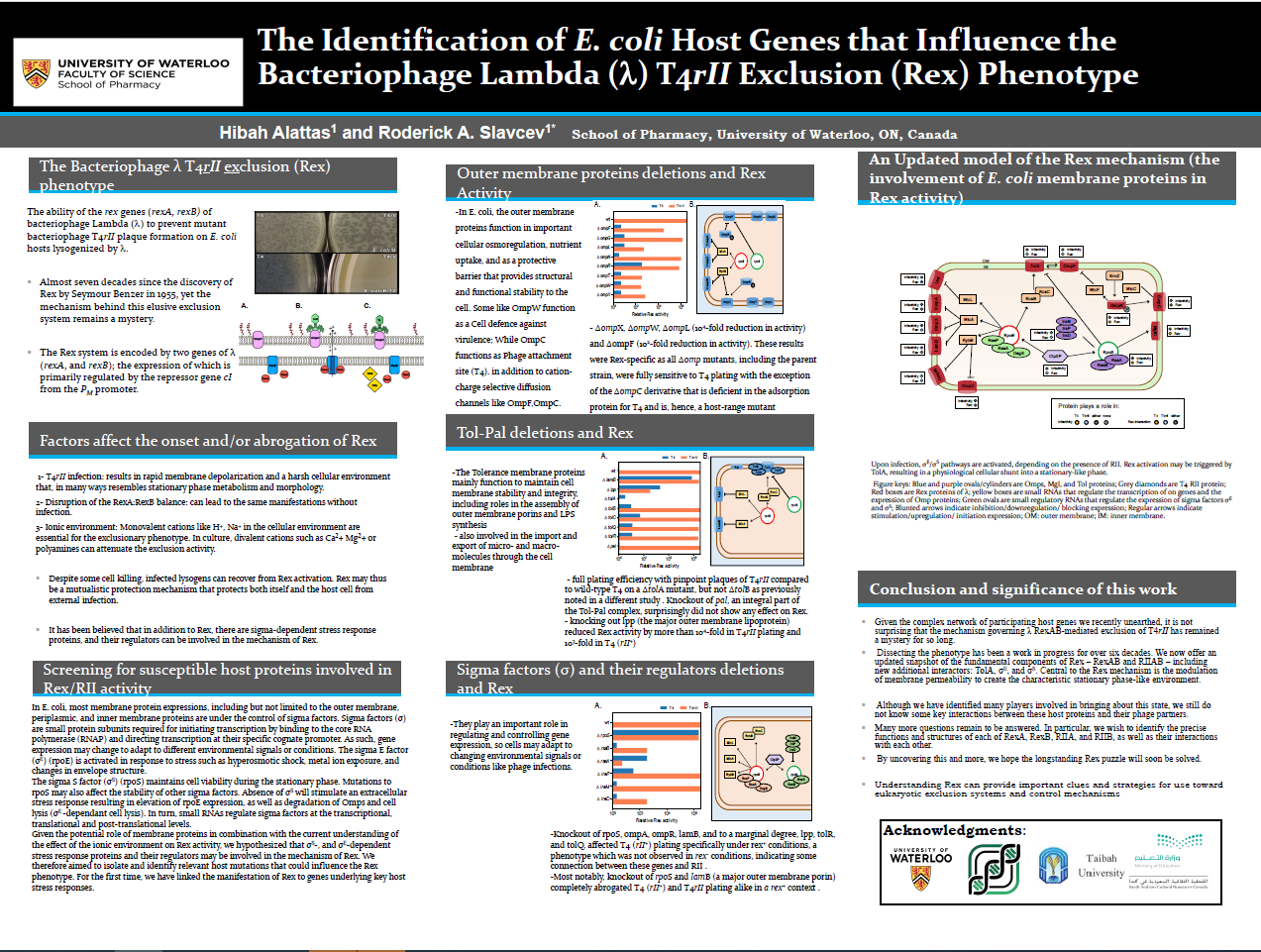Identification of E. coli Host Genes Influencing T4rII Exclusion Phenotype
Overview
The rex genes (rexA, rexB) of bacteriophage Lambda (λ) are able to prevent mutant bacteriophage T4rII plaque formation on E. coli hosts lysogenized by λ. It has been almost seven decades since the discovery of Rex by Seymour Benzer in 1955, yet the mechanism behind this elusive exclusion system remains a mystery. The Rex system is encoded by two genes of λ (rexA, and rexB), the expression of which is primarily regulated by the repressor gene cI from the PM promoter.
In E. coli, most membrane protein expressions, including but not limited to the outer membrane, periplasmic, and inner membrane proteins are under the control of sigma factors. Sigma factors (σ) are small protein subunits required for initiating transcription by binding to the core RNA polymerase (RNAP) and directing transcription at their specific cognate promoter. As such, gene expression may change to adapt to different environmental signals or conditions. The sigma E factor (σE) (rpoE) and the sigma S factor (σS) (rpoS) both modulate cell expression based on specific factors.
Given the potential role of membrane proteins in combination with the current understanding of the effect of the ionic environment on Rex activity, it was hypothesized that σS-, and σE-dependent stress response proteins and their regulators may be involved in the mechanism of Rex. This project therefore aimed to isolate and identify relevant host mutations that could influence the Rex phenotype. Through this work, the manifestation of Rex has been linked to genes underlying key host stress responses.
Dissecting the phenotype has been a work in progress for over six decades. We now offer an updated snapshot of the fundamental components of Rex – RexAB and RIIAB – including new additional interactors: TolA, σE, and σS. Central to the Rex mechanism is the modulation of membrane permeability to create the characteristic stationary phase-like environment.
We wish to identify the precise functions and structures of each of RexA, RexB, RIIA, and RIIB, as well as their interactions with each other. Understanding Rex can provide important clues and strategies for use toward eukaryotic exclusion systems and control mechanisms


